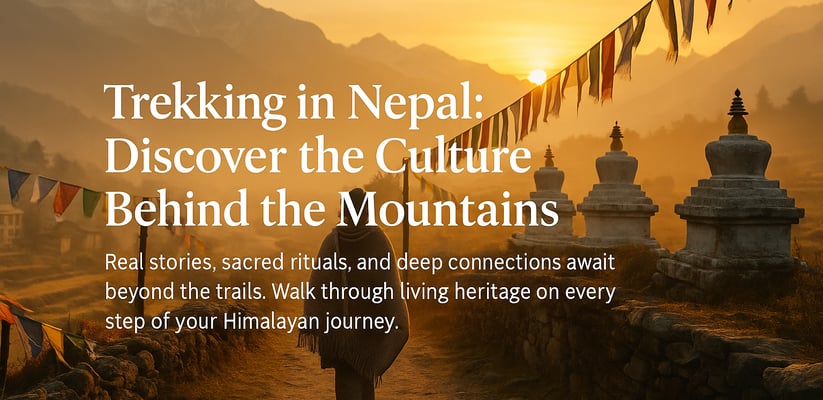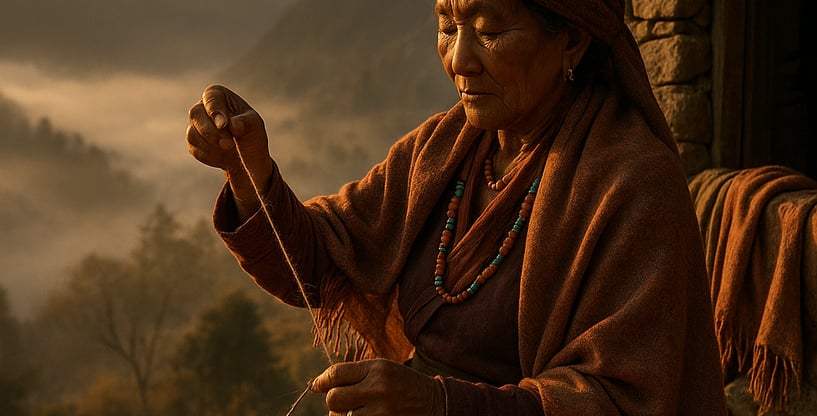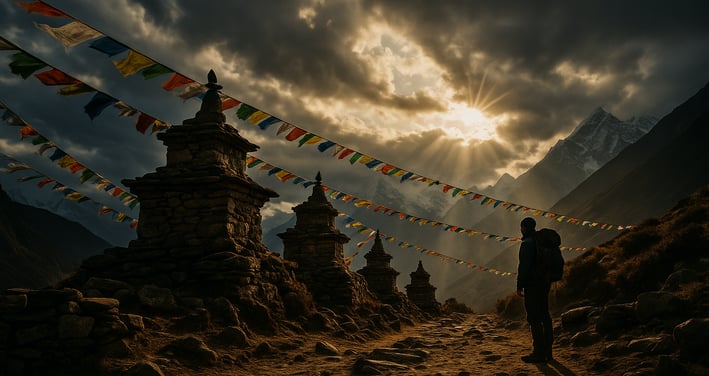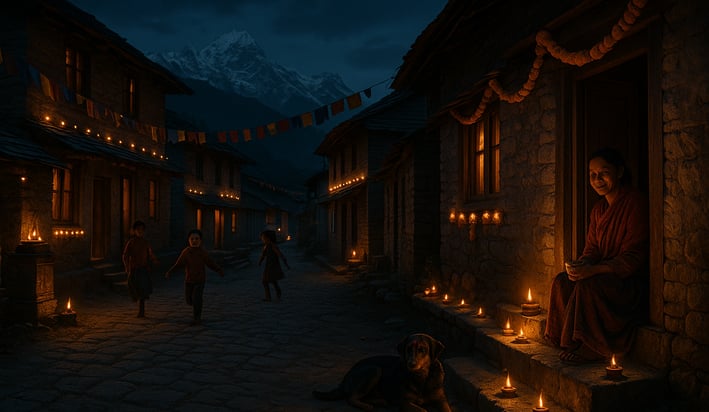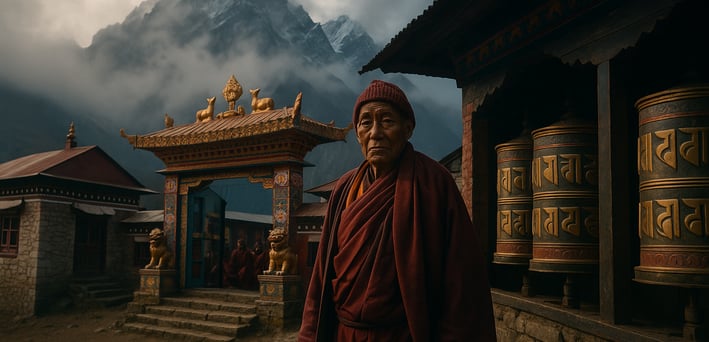Trekking In Nepal:Discover the culture Behind the Mountains
Yes, the mountains are stunning.
But it’s the people who make Nepal unforgettable.
When you go trekking in Nepal, you’re not just walking through landscapes—
you’re walking through stories, rituals, and centuries-old ways of life.
Here’s how to experience the culture of Nepal with heart and respect on your trek.
What Local Culture Looks Like on the Trail
A woman spinning yak wool at sunrise
Children shouting “Namaste!” from the fields
Butter lamps flickering in a tiny mountain monastery
Your host sharing warm raksi and laughing over momo stories
Culture isn’t always scheduled.
It lives in tea breaks, mealtime chats, and quiet moments with locals.
Read more ; Tea house Trekking In Nepal
Key Ethnic Groups You May Encounter
Sherpa (Everest Region)
Originally from Tibet
Known for high-altitude resilience and Buddhist devotion
Visit: Tengboche Monastery, prayer walls, Everest memorials
Gurung (Annapurna & Mardi Region)
Warm, warrior-turned-welcomer community
Often lodge owners, guides, or farmers
Join village dances or learn about their Gorkha heritage
Tamang (Langtang)
Deeply spiritual, quiet, humble
Known for singing, herbal medicine, and hospitality
Try local Tibetan bread or butter tea
Cultural Treasures You’ll Meet on the Trail
Chortens and prayer flags whispering in the wind
Monasteries where young monks chant at dawn
Tika blessings from an old woman in the street
Local school visits that open your eyes and heart
Bring openness, not a checklist.
Let the mountain culture reveal itself slowly.
Festival Trekking: Timing Culture Perfectly
Plan your trek to coincide with:
Dashain (Sept–Oct): Victory of good over evil, family gatherings
Tihar (Oct–Nov): Festival of lights, dogs, and blessings
Losar (Feb–March): Tibetan New Year in high-altitude areas
Buddha Jayanti (May): Sacred time for monastery visits
During these, you’re not a tourist.
You’re a welcomed witness to something sacred.
Read more ; Festivals in Nepal
Cultural Etiquette on the Trail
Namaste = always appropriate
Use right hand when offering or receiving
Don’t step over someone’s legs, or food
Always walk clockwise around sacred sites
Dress modestly—even when it’s hot
Don’t enter a home or shrine without being invited
Simple respect = lifelong warmth in return.
A Real Cultural Moment
“At dusk in Langtang, our host sang a song her grandmother taught her—no audience, no show, just memory. We sat in silence, watching the stars. That’s when I realized: this trek wasn’t about peaks. It was about people.”
– Leon, 108Escapes guest
Final Thought: Walk with Wonder, Not Assumptions
The mountains are made of rock.
But the valleys? They’re woven with rituals, kindness, and old wisdom.
If you walk slowly, greet openly, and listen deeply—
you’ll go home with something far greater than views.
Want a Trek That Honors Local Culture?
👉 Explore Culturally Immersive Treks
👉 Customize a Trek Around Festivals

